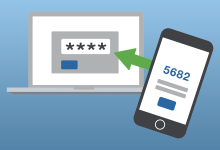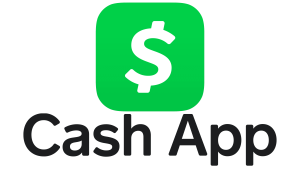How to Open a Chequing Account Online in Canada as a Non-Resident this 2024

If you’re planning to move to Canada, whether it’s for school or a new job, getting your finances in order before your move is crucial. One of the smartest financial moves you can make is to open a Canadian bank account. While it may not be a requirement by most institutions, having a Canadian bank account will make it much easier for you to receive your paycheque, pay taxes, build your credit history, and use your debit card locally. In this comprehensive guide, we will walk you through the process of opening a chequing account online in Canada as a non-resident.
Explore Your Options for Opening an Account in Canada
When it comes to opening a chequing account in Canada as a non-resident, there are several options available to you. Depending on the paperwork you have at hand, you can choose the method that suits you best. Here are the different options you can consider:
- Use a Correspondent Bank: Correspondent banks are authorized to provide financial services on behalf of another bank. They can process payments and complete wire transfers to your existing bank from your origin country. This option is ideal for individuals staying in Canada temporarily or university students who only need occasional fund transfers.
- Open an International Account: Some banks operate worldwide, while others have regional branches in Canada. Having an international bank account can make it easier for you to conduct your banking business both in your home country and in Canada. It’s advisable to set up your bank account before you move to streamline the process.
- Consult a Canadian Bank: Top Canadian banks offer specific services and assistance for non-residents. Get in touch with your preferred bank to inquire about their process for non-residential accounts. For example, Scotiabank’s newcomer program is designed to help individuals open a bank account before their move.
- Open an Account When You Arrive in Canada: While it is possible to open a bank account when you’re physically present in Canada, it’s recommended to set up an online bank account before you move. Each bank may have its own requirements, but typically you will need to present your passport, immigration papers, and temporary resident, work, or student permit.
Consider How You Will Use the Account
Canada offers a wide range of banking options, so it’s important to consider how you intend to use your chequing account. This will help you choose the right account type for your needs. Here are some factors to consider:
- Location: Accessibility is key when choosing a bank. Consider whether the bank is conveniently located on your daily commute to work, school, or other errands. If the nearest branch is a significant distance away, managing your money and addressing any issues may become inconvenient. If you prefer an online chequing account that you can use from anywhere, make sure to test the bank’s online and mobile banking options.
- Accessibility: Think about your banking needs and how you plan to use your account. If you want a combined chequing and savings account, look for banks that specialize in these types of accounts. If your primary goal is to have an account for receiving paycheques and using a debit card for local purchases, opt for a bank that offers low account fees.
- Fees: Canadian bank accounts typically have fees for account maintenance and various transactions. It’s important to choose a bank and account that provide the most value for your money. Avoid opting for a low-fee chequing account that limits your debit transactions if you make more than 20 transactions per month. Look for accounts that align with your spending and saving habits.
Familiarize Yourself with Different Bank Account Types
When it comes to banking in Canada, there are various types of chequing and savings accounts available. Understanding the different options will help you align your financial goals with the right account. Here’s an overview of the different chequing and savings accounts you can access in Canada:
Types of Chequing Accounts
- Standard Chequing: This is the most common type of chequing account that allows you to spend your money using a debit card, paper cheques, and online bill payments.
- Interest-Earning Chequing: Some chequing accounts earn a small amount of interest on your account balances. To earn interest, you will typically need to provide a Canadian Social Insurance Number (SIN) for tax purposes.
- Student/Teen Account: Non-resident students can benefit from a student chequing account while enrolled in a university. These accounts often have little to no monthly fees and reduced overdraft and transaction fees.
- Senior Package: Senior chequing accounts are designed for individuals in their retirement years. These accounts may have lower fees and limited free transactions.
Types of Savings Accounts
- High Interest-Earning Savings Account: This type of savings account allows you to earn interest on your deposits, but you will need to provide a SIN for tax purposes.
- Tax-Free Savings Accounts (TFSA): Non-residents with a SIN through employment are eligible to open a TFSA. However, non-residents will be subject to a 1% tax for each month the contribution remains in the account. While this account is not taxed in Canada upon withdrawal, your home country may have its own tax laws. It’s important to consider these factors if you plan to withdraw and use the money outside of Canada.
- Foreign Currency Savings Accounts: This type of account allows you to conduct transactions in other currencies, such as U.S. dollars or Euros, without incurring high exchange rate fees.
Different accounts come with their own unique fees, so it’s important to be aware of them upfront. Some common banking account fees include:
- Monthly Chequing Account Fees: Some accounts waive these fees if your account balance remains above a certain threshold, typically between $3,000 and $4,500 CAD.
- ATM Fees: Withdrawing money from your bank’s ATMs usually doesn’t result in a fee, but using a different bank’s ATM may incur charges.
- Interac e-Transfer Fees: Many accounts offer a few free Interac e-Transfers per month and charge a small fee for additional transfers.
- Foreign Transaction Fees: If you use your debit card outside of Canada, you may be subject to foreign transaction fees in addition to the foreign currency exchange rate.
- Cheque Book Fees: Ordering cheques typically incurs a flat cost.
- Debit Transaction Fees: If your account has a monthly limit on debit transactions, you may be charged a fee for each transaction that exceeds the limit.
- Non-Sufficient Funds (NSF) Fees and Overdraft Fees: If your account balance cannot cover debit transactions or scheduled payments, you will be charged a fee for each transaction that is covered.
To avoid excessive fees, look for special banking offers for non-residents. For example, Scotiabank offers an account for newcomers that waives the monthly chequing account fee for one year and provides unlimited no-fee foreign money transfers.
How to open a chequing account online in Canada as a non-resident
Before you decide to open a bank account in Canada as a non-resident, you will have to of course make a choice of your desired bank. There are many things to take into account and we have listed some of the “What to consider section” above.
Here are some of the banks that offer bank accounts for non-residents:
- RBC Royal Bank
- TD Bank
- Bank of Montreal
- CIBC
- Scotiabank
- National Bank of Canada
- Desjardins
- Alterna Bank
- EQ Bank
When choosing a bank, it’s important to compare the different features and fees offered by each bank. You should also make sure that the bank is regulated by the Canadian government.
Benefits of a bank account in Canada for non-residents
There are many benefits to having a bank account in Canada for non-residents. Here are some of the most common:
- Convenience: Having a Canadian bank account makes it easy to manage your finances while you’re in Canada. You can easily receive and manage your salary, pay bills, make transactions, and track expenses through a local bank account.
- Building credit history: A Canadian bank account can help you build a credit history, which is crucial for accessing loans, mortgages, and credit cards in the future. Establishing a positive credit history can enhance your financial opportunities in Canada.
- Access to banking products and services: Canadian banks offer a wide range of banking products and services, including savings accounts, chequing accounts, credit cards, loans, and investments. Having a Canadian bank account gives you access to these products and services, which can help you achieve your financial goals.
- Protection of your money: Canadian banks are regulated by the Canadian government, which means that your money is protected by the Canada Deposit Insurance Corporation (CDIC). This means that your deposits are insured up to $100,000 in the event that the bank fails.
- International payments: If you need to make or receive international payments, having a Canadian bank account can make it easier. Many Canadian banks offer low-cost or free international money transfers.
Of course, there are also some potential drawbacks to having a bank account in Canada for non-residents. For example, you may have to pay higher fees than Canadian residents. Additionally, you may not be able to access all of the same products and services as Canadian residents.
Promoted contents:
Overall, the benefits of having a bank account in Canada for non-residents outweigh the drawbacks. If you’re planning to spend any time in Canada, or if you want to build a credit history in Canada, opening a bank account is a good idea.
Check the List of Required Documents
To open a bank account in Canada, you will need to provide proper identification. It’s not necessary to wait until you’re physically in the country to start the process—you can open a chequing account online. Here’s what you need to open a chequing account in Canada:
- Gather the Necessary Documents: While document requirements may vary between banks, you will typically need to provide a Canadian SIN (if opening an interest-bearing account), valid work, student, or residential permit, your passport, and immigration papers. If you already have a Canadian debit or credit card from another bank, it’s helpful to present them when opening your new account.
- Identify Your Custodian if You’re Under 18: If you’re under 18 years of age, you will need to identify your custodian when opening a chequing account.
- Complete an Application: Save time by completing your banking application online. Have all your important documents, employee ID, and bank account numbers ready to fill out the application accurately.
- Fund Your Account: Even if you plan to receive paycheques from your new job directly into your chequing account, it’s a good idea to make an initial deposit. This can help with the account approval process. If you’re setting up your chequing account online, you can easily wire transfer money from your non-Canadian bank.
If you’re new to Canada and want to ensure your finances are on track in your new country, consider speaking to a Scotia advisor who can provide guidance and assistance.
Interac and Interac Flash are trademarks of Interac Corp. Used under license.
Additional Information:
- It’s important to research and compare different banks and their account offerings before making a decision.
- Some banks may require you to have a Canadian address to open an account.
- Non-residents may also have access to additional banking services, such as credit cards and loans, depending on the bank.
Access the bank’s online portal or download their App
You will need to visit the official website of your selected bank to create your online account. In some cases, you might just have to download their mobile App and follow the required steps.
Complete the application process
During your account creation, you will be asked to provide the necessary documentation. The bank representative will review your application and provide you with the next steps.
Fund your account
Once your account has been approved, you will need to fund it. This can typically be done by transferring funds from an existing bank account, setting up a direct deposit, or making a deposit in person at the bank.
By following these steps, you can open a bank account in Canada online and take advantage of the many benefits that come with it, including access to a wide range of financial services, a safe and secure place to store your funds, and the ability to manage your finances from anywhere, at any time.
Conclusion
In conclusion, opening a chequing account online in Canada as a non-resident is a relatively straightforward process. By exploring your options, considering how you will use the account, familiarizing yourself with different account types, and gathering the necessary documents, you can efficiently open a bank account to meet your financial needs in Canada.
Remember, always consult with a professional advisor for specific financial, investment, and tax advice tailored to your individual circumstances.








